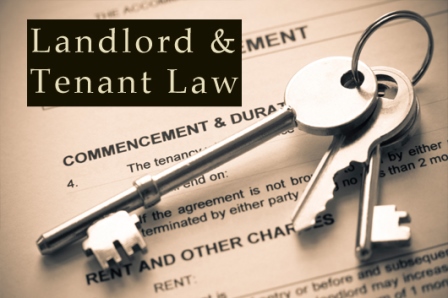मराठीमध्ये वाचा
Readers, welcome back! In this article, we’ll take an overlook at the Model Tenancy Act, 2020 proposed by the Union Cabinet. The Ordinance or Act will be passed in the next session. States can implement this law by modifying the law ratified by the central government to meet their needs. The bill aims to eliminate mistrust between tenants and landlords while also ensuring speedy redressal of disputes. If this bill becomes law, the prevailing Rent Control Act in the state will be a past. The following information may lead you to believe at the first-look that Model Tenancy Act is unjust to tenants and allows landlords to coerce people. Except in the case of the implementation of any law, its flaws go unnoticed. As a result, we support any new legislation that is introduced. Because, change is a good.
What makes this act special?
- The rights and obligations of landlords and tenants are clearly defined.
- An officer, not below the rank of Deputy Collector, will be appointed as the Rent Authority.
- Rent Courts and Rent Tribunals will be established.
You may like this blog also: Don’t rush to move into a new home!

Salient features of Model Tenancy Act:
- It has been made mandatory to register the tenancy agreement as well it has to be in writing. The tenancy agreement shall be signed in duplicate by both the landlord and tenant, and one each of such original signed tenancy agreement shall be retained by the landlord and tenant.
- Security deposit for residential premises shall not exceed two months’ rent and in case of non-residential premises it shall be as per the terms of tenancy agreement subject to a maximum of six months’ rent.
- An agreement in writing along with the Aadhaar card and PAN card shall be informed to the Rent Authority by the landlord and tenant jointly, in the form specified in the First Schedule (FORM FOR INFORMATION OF TENANCY) within a period of two months from the date of tenancy agreement.
- The Rent Authority needs to be upload details of the tenancy agreement along with the documents on its website in local vernacular language or the language of the State/Union territory.
- In the event that the tenant fails to vacate the premises after the termination of tenancy, the landlord is entitled to double the monthly rent for the first two months and then four times the monthly rent.
- The terms of agreement shall be binding upon successors of landlord as well as tenant for the remaining period of the tenancy agreement.
- Sub-letting of whole or part of the premises is not permitted without execution of supplementary agreement between landlord and tenant as well as it needs to be informed to the Rent Authority.

- The tenant will have to bear the expense of modest and specific works as provided in this Act, if the tenant does not bear the same as required by this Act, the landlord will be allowed to reclaim the cost.
- The landlord must repay the interest-free security deposit after deducting rent and expenditures on the day of tenancy termination, and if the landlord fails to repay the security deposit, the court may order the landlord to repay the security deposit with interest.
- The tenant will be able to deposit the rent to the rent authority if there is a question regarding the ownership of the premises or in the event of death of the landlord.
If the tenant fails to do minor maintenance and repairs, the landlord may do so and deduct the amount from the security deposit. - Once the Model Tenancy Act comes into force, all claims relating to the tenancy agreement will be heard in the rent court only and not in any other court.
- The landlord may appoint a property manager to maintain the property, to collect the rent, carry out repairs, inspect the property, give notice to the tenant, and do the work beforehand.
- Landlords or property managers can enter a home by giving the tenant 20 hours’ notice. Can inspect the house, carry out repairs. (The rules for entering this house can be controversial. It can raise a lot of questions and problems.)
- The tenant’s basic and essential services cannot be interrupted by the landlord.
- Tenants are responsible for maintaining the property tidy and in good condition.
Click here for any Legal advice.
Responsibilities of the Landlord:
- Structural repairs except those necessitated by damage caused by the tenant.
- Whitewashing of walls and painting of doors and windows.
- Changing and plumbing pipes when necessary.
- Internal and external electrical wiring and related maintenance when necessary.
Recommended for you: Bye-Laws amendments for housing society disputes resolutions

Responsibilities of the Tenant:
- Changing of tap washers and taps.
- Drain cleaning.
- Water closet repairs.
- Wash Basin repairs.
- Bath tub repairs.
- Geyser repairs.
- Circuit breaker repairs
- Switches and socket repairs.
- Repairs and replacement of electrical equipment except major internal and external wiring changes.
- Kitchen fixtures repairs.
- Replacement of knobs and locks of doors, cupboard, windows etc.
- Replacement of fly-nets.
- Replacement of glass panels in windows, doors etc.
- Maintenance of gardens and open spaces let out to or used by the tenant.
FORM FOR INFORMATION OF TENANCY













 Call
Call Whatsapp
Whatsapp Enquiry
Enquiry
[…] Read in English […]
[…] This might help you:Model Tenancy Act, 2020 […]
[…] This might help you:Model Tenancy Act, 2020 […]